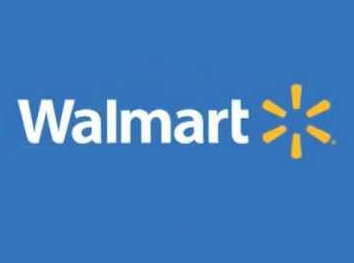Walmart will demand that its suppliers of leafy greens use its Blockchain by September 2019
 Walmart and Sam’s Club sent a letter to their suppliers of fresh leafy greens requiring that they trace their products all the way to the farm, utilizing Walmart-IBM Food Trust network, using blockchain technology software by September of 2019.
Walmart and Sam’s Club sent a letter to their suppliers of fresh leafy greens requiring that they trace their products all the way to the farm, utilizing Walmart-IBM Food Trust network, using blockchain technology software by September of 2019.
This decision to require the use of blockchain was triggered by the recent romaine lettuce outbreak linked to E. coli O157:H7. The outbreak resulted in 210 confirmed cases, caused 96 hospitalizations, and tragically 5 deaths. While the FDA and the health authorities were able to quickly determine that the romaine lettuce came from Yuma AZ, the exact affected lots could not be identified until after the outbreak was over. As a result, millions of bags of lettuce were destroyed unnecessarily, impacting consumer confidence in the product, and negatively impacting the livelihood of many farmers.
By including all its suppliers and their suppliers on a blockchain system, it will make the process more traceable, transparent and fully digital. Having this digital information available will make it easier to identify the source of the contaminated product and will discard only the product which is at risk.

“We built the IBM Food Trust solution using the IBM Blockchain Platform, which is a tool or capability that IBM has implemented to help companies build, govern and run blockchain networks. Its built is using Hyperledger Fabric (the open source digital ledger technology) and it runs on the IBM Cloud,” says Bridget van Kralingen, IBM’s senior VP for Global Industries.
Walmart is making it simple for more than 100 farms that supply Walmart to enter the information to the system; fundamentally, suppliers can use a smart device and the internet to take part in the system. “Our customers deserve a more transparent supply chain. We felt the one-step-up and one-step-back model of food traceability was outdated for the 21st century. This is a smart, technology-supported move that will greatly benefit our customers and transform the food system, benefitting all stakeholders,” said Frank Yiannas, vice president of food safety for Walmart.
Robert Tauxe, director of the CDC’s Division of Foodborne, Waterborne and Environmental Diseases said: “Enhanced ability to trace a contaminated food back to its source will help government agencies and companies to identify the source of a foodborne disease outbreak, coordinate more effective recalls of foods thought to be contaminated and learn where past problems began,” “We think these steps will strengthen future prevention efforts and better protect the public’s health from the threat of foodborne illness.”
We all agree that the current model of traceability of one-step up and one step back is inappropriate and better scheme is required. However, we need to ask if the Walmart-IBM Food Trust network that relies on blockchain technology is the best solution to the traceability problem.
Critics of the blockchain technology are unconvinced that the blockchains being developed by Walmart-IBM are all that different from online databases. “I can’t see how doing this in a blockchain data format will make this magical in any way,” said David Gerard, the author of “Attack of the 50 Foot Blockchain.” “I think it’s mostly a P.R. move, so these companies can sell themselves as blockchain leaders,” he said.
While a blockchain can capture the digital record of a box of spinach, it cannot inform us if someone opened the box and changed the spinach inside, replacing it with lettuce or illegal drugs. Therefore blockchain will not protect us from fraud.

Many large global food corporations have been studying how they might use the blockchain to keep records among a wide array of parties — like the many hundreds of entities involved in moving leafy greens from the farm to the grocery shelf.
In the current Walmart-IBM system, all records for the blockchain are stored on the IBM cloud for Walmart. “The idea is right but the execution seems off,” said Simon Taylor, the co-founder of 11:FS, an adviser to companies on blockchain adoption. “IBM took new a technology that doesn’t need a middleman and made themselves the middleman.”
Walmart claims that its blockchain will allow to track food from the field, throughout all the processing steps (washing and cutting, to the warehouse), and finally to the store. The system will allow pinpointing which part of the field and at what time the vegetables were harvested.
According to Bridget McDermott, IBM vice president, many users are expected to pay a fee, starting at several hundred dollars a month for a company with less than $50 million in revenue and increase with company size.
IBM is working on blockchain traceability systems with 10 other companies, including Dole Food, Unilever and berry supplier Driscoll’s. IBM holds a 32% share of the $700+ million markets for blockchain, WinterGreen Research said in January.
One of the main questions relating to company-owned individual blockchain is the burden that it might enforce farmers and suppliers to add their data (and pay) in multiple supermarket chains and other customers. We need to find an effective way to add the information once and disseminate it to multi-company blockchains.
